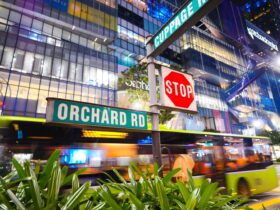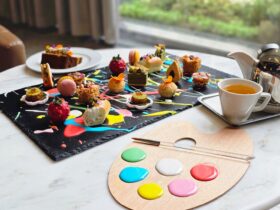 In the last several centuries, external forces shaped Vietnam’s culture into what it is today. We take a look at what’s indigenous and what’s foreign-influenced
In the last several centuries, external forces shaped Vietnam’s culture into what it is today. We take a look at what’s indigenous and what’s foreign-influenced
Vietnam is a beautiful country with one of the oldest histories in the world. In the last millennium, it has been at the confluence of external forces ranging from the Chinese to the French to the American to the Russian. Vietnam has assimilated and incorporated all these influences.
We take a visual stroll from the indigenous to the foreign elements of Vietnam’s style.
Vietnam Style: Local Authenticity
The Ao Dai, or long dress, is one of the most beautiful and iconic national dresses in the world. The modern rendition of the Ao Dai was developed in Saigon during the 1950s and was very popular in the 1970s.
Looking at vintage photos of Saigon from that period, one can see many ladies scooting around town with their Ao Dai’s billowing behind them. How stylish!
Water Puppets

Less well-known, but equally iconic as the Ao Dai, is Vietnamese water puppetry. Originating from the northern farming towns of Vietnam in the 11th Century, these puppets provide entertainment for the farming community.
Crafted out of wood and lacquered, these puppets perform above the brackish water with rods below the water to articulate their moving arms and bodies. From behind the curtains, the puppeteers control them to dance along to the accompanied song and music.
Elaborate puppets include dragons that swim below water, and surface to spew fire, as well as tree-climbing monkeys.
Water puppetry is very popular with tourists in Vietnam and, in Ho Chi Minh City, you can catch one at the Rong Vang Puppet Theatre (Golden Dragon Water Puppet Theatre). To avoid seeing the back of a person’s head for much of the performance, go there early for front row seats.
Vietnam Style: Chinese Influences

Saigon & Jade Pagoda Temple
The largest minority community in Ho Chi Minh City is the Chinese, with a population of about 500,000. They have been here since the late 1700s and are concentrated mainly in Saigon. Now the Chinese form about 5 per cent of the city’s population, which is overwhelmingly dominated by the Kinh, or ethnic Vietnamese.
One of the Chinese’s most famous temples is the Jade Pagoda Temple, dedicated to the Jade Emperor of Heaven. This bustling temple is filled with wooden carvings of fierce gods, monstrous heroes, and many other traditional icons. But what is most fearsome is a room called the “Hall of 10 Hells”, where wooden panels depicting the “Ten Regions of Hell” foreshadow the fate of wayward people.
The Jade Pagoda Temple is worth a visit because it has some of the most beautiful lamps I have ever seen. The smoky atmosphere, intense saturated reds and streaming shafts of light make for dramatic photos worthy of Facebook or Instagram.
Vietnam Style: French Influences
Da Lat
A 30-minute flight via VietJetAir from Ho Chi Minh City brings you to Da Lat, which translates to “Stream of the Lat”.
It is better known as “Little Paris”. With an elevation of 1,500m, Da Lat’s average temperature is around 20 degrees Celsius. The French colonials founded this city in the 1890s as a refuge for their community, from Saigon’s oppressive heat.

French colonial architecture is almost everywhere here. There’s even an iron structure that looks similar to the Eiffel Tower in Paris, while quaint colonial buildings line the streets below. The railway station, now a national monument with its three tall gables, was designed and built to resemble the Normandy’s Trouville-Deauville Station.
After the departure of the French, Da Lat became a very popular domestic tourist attraction. It is the preferred place for local honeymooners presumably because it resembles Paris, the “City of Love”, and it doesn’t cost as much to get to.

Saigon Central Post Office & Saigon Notre Dame Basilica
Located in downtown Ho Chi Minh City are two destinations worth visiting. First, and more impressive, is the Saigon Central Post Office, designed by the famous architect Gustave Eiffel. Yes, the same chap who designed the Eiffel Tower in Paris and the Statue of Liberty in New York City.
The space is gorgeous and impressive, typical of the neoclassical style popular in Europe in that century, though the portrait
of Uncle Ho at the end doesn’t seem to gel with the overall design.
Across the street is the second attraction called Saigon Notre-Dame Basilica or the Catholic Basilica of Our Lady of The Immaculate Conception. Completed in the 1880s as a place of worship for the French colonialists, all of its building materials, including the bright red-coloured bricks on its exterior, were imported from France.
Stewardess Uniforms
 As stewardesses’ uniforms go, there are only a few around the world which are truly unique. While VietJetAir, may not be the most well-known carrier internationally, it certainly wins on uniqueness. According to the General Manager of VietJetAir, their uniforms were inspired by the French colonial soldiers’ uniforms in Indo-China.
As stewardesses’ uniforms go, there are only a few around the world which are truly unique. While VietJetAir, may not be the most well-known carrier internationally, it certainly wins on uniqueness. According to the General Manager of VietJetAir, their uniforms were inspired by the French colonial soldiers’ uniforms in Indo-China.
A bit of research online confirmed the similarity in cut. The side cap, however, is not French. From the layered folds, it appears to be a Russian “pilotka” side cap worn by Russian pilots. This is certainly a pop cultural homage to their Russian comrades.
The author, Frank Young would like to thank VietJetAir for giving Weekender the opportunity to fly to Ho Chi Minh City and Da Lat City. VietJetAir flies from Singapore to Vietnam, destinations within Vietnam, and other destinations in the region.
ADVERTISEMENTS











Leave a Reply